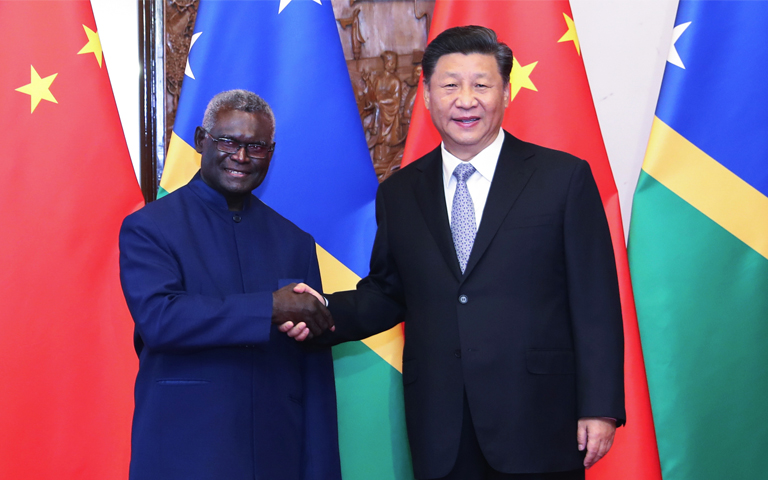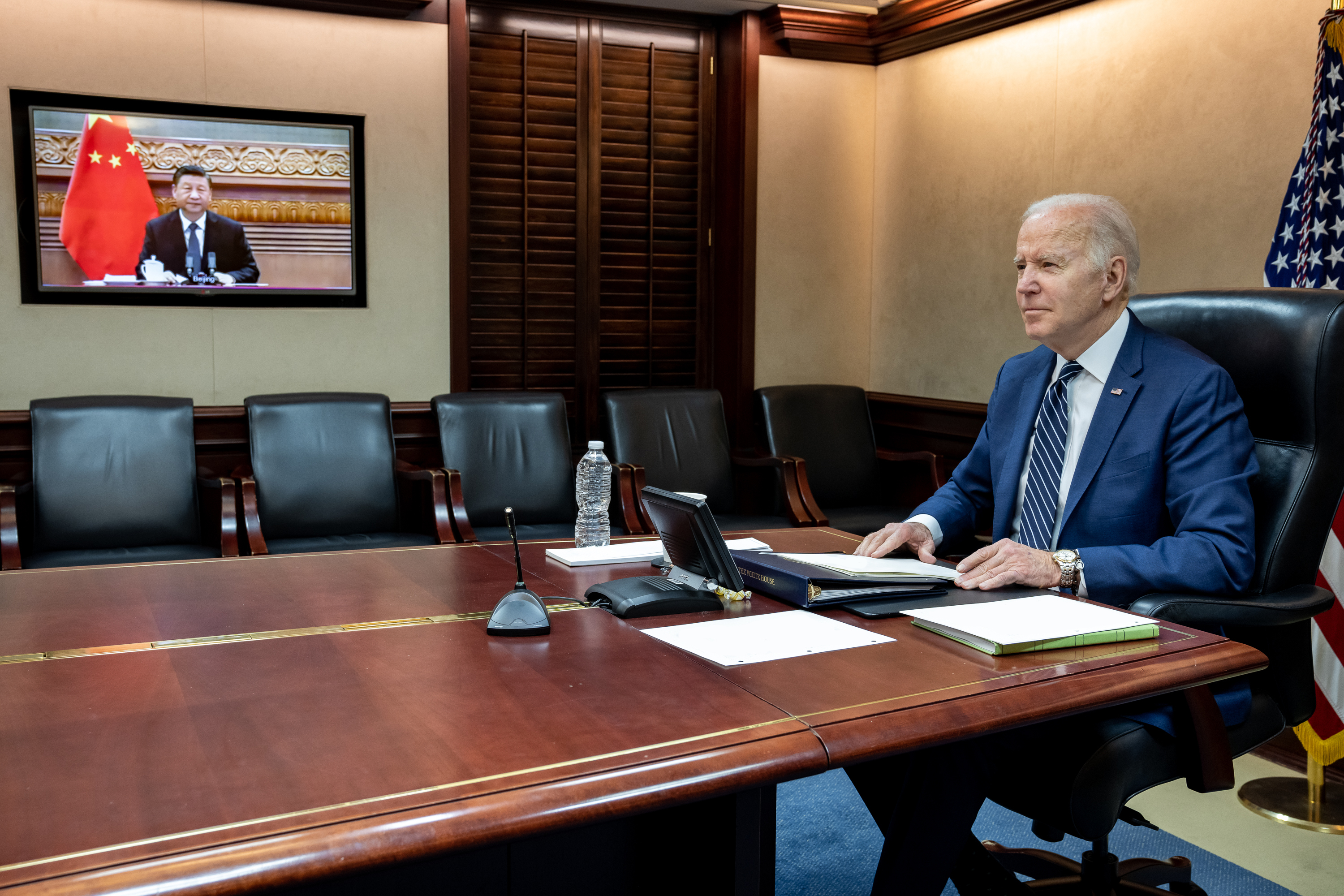With ‘Resources, Capability & Intent’, China Remains The Biggest, Long-Time Threat To US Than Russia — USAF
May 4, 2022
The US has not lost sight of its biggest global challenger and military rival, China, despite its preoccupation with the Russia-Ukraine war. This becomes evident as the US undertakes exercises in the Indo-Pacific at a time when a war is being fought in Eastern Europe.
This sentiment echoes among the highest echelons of the US military. Recently, US Air Force Secretary Frank Kendall told an audience at the Brookings Institution that China posed a “far more serious and long-term challenge and threat” to the United States’ strategic capabilities than Russia.
“Of the two I am much more concerned about China than Russia,” Kendall said. “They have the resources, they have the capability [and] they have the intent.”
Kendall indicated that China has the time to develop long-term military weapons that will be able to destroy the US’s long-term ability to project force around the world.
Kendall did not specify the kind of military weapons that he was referring to. However, the comments somewhat lend credence to China’s state-of-the-art military and technological advances, for example, its hypersonic program, which has far outpaced the United States.
“China has the ambition to be the great power on the face of the earth. They have the ambition to be the great global power and to do that they have to displace the United States,” he said.
He further stated that he did not believe that China was interested in expanding its territory but rather in gaining as much worldwide influence as possible to determine the rules for the global economy.
These remarks are very significant because the United States is embroiled in a bitter rivalry with China, with tensions at an all-time high in the Indo-Pacific region and other geographies where the two are competing for power and influence.
One reason why China could be seen as a bigger challenger than Russia is because of its GDP. Nitin J Ticku, a defense expert and managing editor of the EurAsian Times says — forget Russia, even the USSR was never as rich as China is today. Chinese military spending is roughly four times that of Russia and could bypass the overall American economy in a decade. These are ominous signs for the US.
The major difference between the two US adversaries is — Russia is interested in territorial gains that would allow it to secure its frontiers from an expansionist NATO and, China, on the other hand, seeks to dominate the international landscape and wrest the hegemony that has been held by the US since the collapse of the Soviet Union.
China has been marching towards regions that have traditionally been the American sphere of influence and threatening the status quo, which is often seen as a threat to the security of the regional US allies.
Closer home, China has territorial disputes with several South-East Asian countries in the South China Sea. Beijing claims practically the entire region and has used intimidation as a tactic to corner the smaller states (aligned with the US) that it has disputes with — including the Philippines, Vietnam, Malaysia, and Brunei. It has built artificial islands to further secure its ownership and militarized them, against warnings.
A controversy had erupted when a US admiral revealed in March that China had fully militarized three islands in the region with anti-ship and anti-missile systems – understood as an attempt to bolster its A2/AD capability.
In its neighborhood, China remains marred in a border conflict with the strategic partner of the United States and the cornerstone of the Indo-Pacific policy, India.
Both nations fought a brief but bitter war in 1962 and recently were involved in a bloody confrontation along the disputed Himalayan border.
Besides, China is also arming India’s bitter enemy, Pakistan with cutting-edge equipment to challenge India’s influence in the region, cultivating Islamabad’s Navy to function as a PLA proxy until Beijing can exponentially enhance its presence in the Indian Ocean region (IOR).
China has also constructed a military base in Africa on Djibouti Island and is expanding far and wide into the African continent through its Belt and Road Initiative (BRI). Africa has traditionally been in the British, French, and American spheres of influence.
Though Indo-Pacific rivals led by the US have come up with a counter-initiative called the Blue Dot Network, they are still years away from reaching the scale of investment and trade that Beijing currently enjoys. Its (Chinese) massive capital and military power have been instrumental in its quest to Africa.
However, the most significant flashpoint between the US and China goes through the Taiwan Strait. China has vowed to reunite Taiwan with the Chinese mainland, with force if necessary.
Despite accepting the One-China policy, the US has extended military support to Taipei and remains the biggest obstacle for China to gobble Taiwan.
Another major stakeholder in the Taiwan issue is a staunch US ally, Japan. By its location close to Taiwan, any aggression against the island state is expected to draw Japan into the conflict which could risk a direct military confrontation between China and the US.
According to Pacific Commander in the US Air Force, Kenneth Wilsbach, China has very sophisticated Anti-Access/Area-Denial capabilities along its coast to repel any possible attack on itself. If an armed confrontation was to take place between the US and China, the latter would have a homeland advantage against the US.
Another region where China’s growing influence is threatening the US and its ally, Australia, is the Pacific region. China recently concluded a security pact with the Solomon Islands which has raised concerns about a potential military base just about 2,000 kilometers from Australia.
China’s growing influence among the Pacific Island Countries (PIC) also threatens the existing regional order where Canberra is the first responder.

Further, China has also stationed missiles like the DF-26 that threaten American assets as far as Guam, which hosts a critical American military base in the region.
The heat has been felt by Australia which is now in the process of developing its nuke submarine equipped with nuclear propulsion technology sourced from the US and the UK under the AUKUS agreement. The three partners will also cooperate on the development of hypersonic missiles as was announced recently.
China has also made inroads into the Latin American region, riding on the plank of the Belt and Road Initiative. The region is the United States’ backyard where it has historically exerted influence and on several occasions, even by suppressing popular movements.
Chinese investment and its growing influence in the Caribbean region is a clear red line given that Venezuela and Cuba already favor Russia.
In a surprising turn of events, China has also now reached as far as Siberia in Europe. In a semi-secret mission that took place earlier, Chinese transport aircraft YJ-20 delivered surface to air missile system to Siberia passing through Turkish and the airspace of other European nations.
A common pattern among all these regions is the Chinese ambition of dismantling the existing world order to slowly make space for itself next to the US and then gradually assuming the role of a global hegemon – a reputation that has so far only been enjoyed by the United States.
On top of that, the fact that China is a close ally of Russia is also detrimental to the interests of the US. It has issued several warnings to China against supplementing Russia or helping it circumvent global sanctions but doubts persist.
China has not only refused to condemn Russia for the invasion of Ukraine but also reinforced its relationship with Moscow.
China’s stupendous military rise has unsettled the United States whose military prowess is being constantly challenged by the People’s Liberation Army.
A US Congressional report had earlier mentioned that the Chinese Navy has the largest naval fleet by size. China, according to US Navy Chief Admiral Michael Gilday, is a formidable military enemy that is constantly developing and achieving its goals years ahead of schedule, putting pressure on the US Navy.
The US Air Force has also accepted China’s air prowess. US Air Force Chief Charles Brown had earlier said that China would be able to surpass the US Air dominance by 2035. He had said that the PLA had “the largest aviation forces in the Pacific” and had created them “underneath our nose”.
A domain where the US trails behind not just China but also Russia is the hypersonic weapons program. Both China and Russia have operational hypersonic missiles, with Russia even using its missile in the Ukrainian invasion.
However, the US is still some time away from fielding a weapon. However, efforts are on to achieve that objective in full earnest and the HAWC test conducted by the US secretly in the recent past was hailed as a success.
The US faces a serious challenge from China, even in space. After the International Space Station retires sometime around 2030, China could be the only country to operate a space station, that too single-handedly.
So while the US is having to dole out significant resources for Ukraine, it recognizes the threat from Russia will not last forever and that the Chinese dragon is only going to get bigger and bigger.

No comments:
Post a Comment